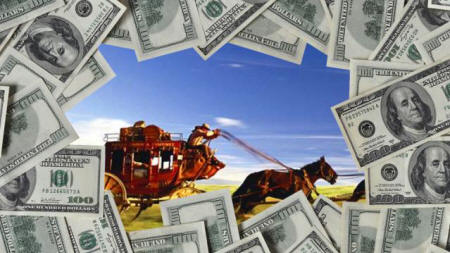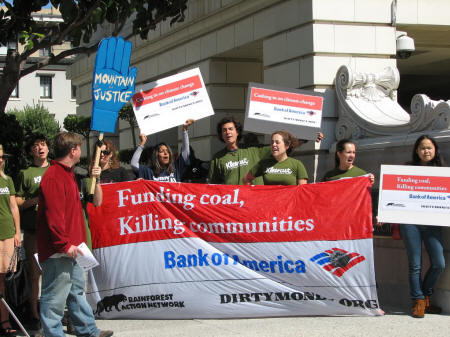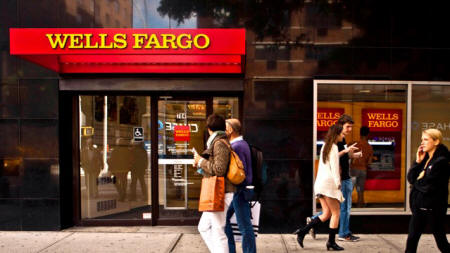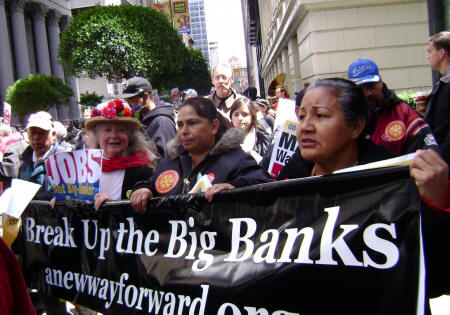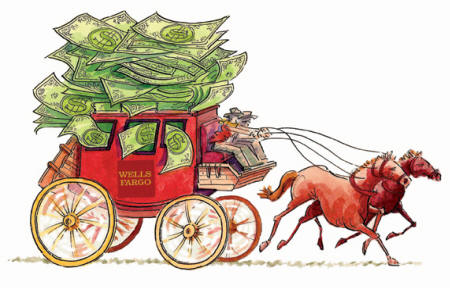|
Banking on Influence with Wells Fargo July 31, 2013
Just recently, in late July, Wells Fargo surpassed the Industrial and Commercial Bank of China (ICBC) as the world's largest bank by market capitalization.
This followed Wells Fargo reporting a 19% increase in profits over the second quarter as the bank has been busy consolidating the housing market while other big banks have retreated from it. Wells Fargo had amassed a share of almost 40% of the U.S. mortgage market by early 2013.
Now, let's put this in context with the company's other recent activities.
Wells Fargo, which acquired Wachovia in the wake of the financial crisis, controlled roughly 28.8% of all home loans issued across the United States in 2012, compared to 11.2% of the market it controlled in 2007, just before the housing implosion.
In 2012, the bank paid a $175 million settlement following revelations that mortgage brokers working with Wells Fargo had charged higher fees and rates to more than 30,000 minority borrowers across the country than they had to white borrowers who posed the same credit risk.¯
In the settlement, the world's largest bank admitted no wrongdoing,¯ noting in a press release that the bank simply wanted to avoid a long and costly legal fight.¯ Then, in 2013, Wells Fargo agreed to a further $42 million settlement because it neglected the maintenance and marketing of foreclosed homes in black and Latino neighborhoods across the country.¯ Again, of course, the bank admitted no wrongdoing.
But that's just the tip of things. A civil mortgage fraud suit was filed against Wells Fargo in late 2012 for hundreds of millions of dollars in damages over reckless mortgage loans¯ made by the bank for over a decade in the lead-up to the financial crisis.
Even in light of the massive settlement in 2012 over mortgage fraud, which simultaneously forced big banks to adhere to new rules regarding the mortgage market, it was found that both Bank of America and Wells Fargo had flagrantly violated those obligations,¯ increasing foreclosure risks for Americans.
Also, this past May, Wells Fargo agreed to pay a $105 million settlement in a fraud case brought by Orange County, which also implicated Bank of New York Mellon to the tune of a $114 million settlement.
It gets better. In 2010, Wachovia “ which was purchased by Wells Fargo in 2008 “ paid a settlement of $160 million for laundering over $100 million in drug money for Mexican and Colombian drug cartels. Further, the bank admitted that it had failed to apply the proper anti-laundering strictures¯ regarding the bank's handling of $378.4 billion in currency exchanges with Mexico between 2004 and 2007.
A federal prosecutor commented, Wachovia's blatant disregard for our banking laws gave international cocaine cartels a virtual carte blanche to finance their operations,¯ as tens of thousands of Mexicans were killed in an exponentially violent drug war.
Thus, in the aftermath of the financial crisis, not only did the big banks receive sprawling government bailouts (Wells Fargo got $25 billion from the U.S. government), but according to the UN, proceeds pouring in from the global drug trade ultimately helped keep Wells Fargo and others afloat as the only liquid investment capital¯ available to them during the crisis.
But Wells Fargo didn't just profit from laundering money for major drug cartels - it also profited, and continues to profit, at the other end of the drug war as a major investor in the prison-industrial complex, specifically with heavy investments in the GEO Group, the second largest private prison company in the United States.
As the largest bank in the world, Wells Fargo is deeply connected with some of the most powerful U.S. and international institutions to ensure that no matter how many crimes it commits - fraud, illegal foreclosures, money laundering, you name it - it will continue to consolidate markets, grow larger and presumably get away with its criminal activities for relatively small fines.
The Global Power Project examined a total of 26 individuals on the executive committee and board of directors at Wells Fargo to assess their institutional affiliations.
The most represented institutions (with three individual affiliations each) are the Council on Foreign Relations and PricewaterhouseCoopers (PwC), followed by Harvard, Citigroup, Chevron, the Financial Services Roundtable and Target Corporation (with two individual affiliations each).
Meet the Elites
Elaine L. Chao, who sits on the board of Wells Fargo, was formerly U.S. Secretary of Labor in the George W. Bush administration, from 2001 to 2009.
She was a Distinguished Fellow of the Heritage Foundation from 1996 to 2001 and has resumed that position since 2009. She was also the President and CEO of the United Way of America from 1992 to 1996, Director of the Peace Corps from 1991 to 1992, and Deputy Secretary of the U.S. Department of Transportation from 1989 to 1991.
Chao is a member of the board of directors of Dole Food Company, News Corporation, Protective Life Corporation, the Institute of Politics of Harvard Kennedy School of Government, and a member of Harvard Business School Board of Dean's Advisors, as well as a member of the Council on Foreign Relations.
John S. Chen, also on the board of Wells Fargo, is a senior adviser to Silver Lake Partners, a director of the Walt Disney Company, a member of the Board of Overseers Emeriti of the Watson Institute for International Studies at Brown University, a former member of the President's Export Council, a member of the board of trustees of the Brookings Institution, chairman of the U.S.-China Policy Advisory Roundtable at the Center for Strategic and International Studies (CSIS), and a member of the Council on Foreign Relations.
Wells Fargo board member Enrique Hernandez, Jr. is the president and CEO of Inter-Con Security Systems, and sits on the boards of Chevron, Nordstrom, McDonald's Corporation, and the board of trustees of the University of Notre Dame. He is a member of the Harvard College Visiting and Harvard University Resources Committees and is a member of the John Randolph Haynes and Dora Haynes Foundation.
Federico F. Peńa, on the Wells Fargo board, was a U.S. Secretary of Transportation and U.S. Secretary of Energy during the Clinton administration, and previously a member of the Colorado House of Representatives and a former mayor of Denver. More recently, he has been a senior adviser to Vestar Capital Partners, on the board of Sonic Corporation and a member of the Diversity Advisory Board of Toyota North America.
A former national board member of the Obama-Biden Transition Team, Peńa is also former National Co-Chair of Obama For America and currently a member of the Council on Foreign Relations.
John G. Stumpf, the president and CEO of Wells Fargo, is a member of the board of directors of the Financial Services Forum and chairman of the board of the Financial Services Roundtable, and is also on the boards of Target Corporation, Chevron, and on the board of trustees of the San Francisco Museum of Modern Art.
For a mega-money laundering, drug war profiteering, prison-industry enlarging global bank like Wells Fargo, the evidence is obvious: it helps to have affiliations with individuals and institutions that make up the U.S. and increasingly the international power elite.
Like the other big banks, Wells Fargo is too big to fail, too big to jail, too criminal to control - and too timorous to tolerate.
|
